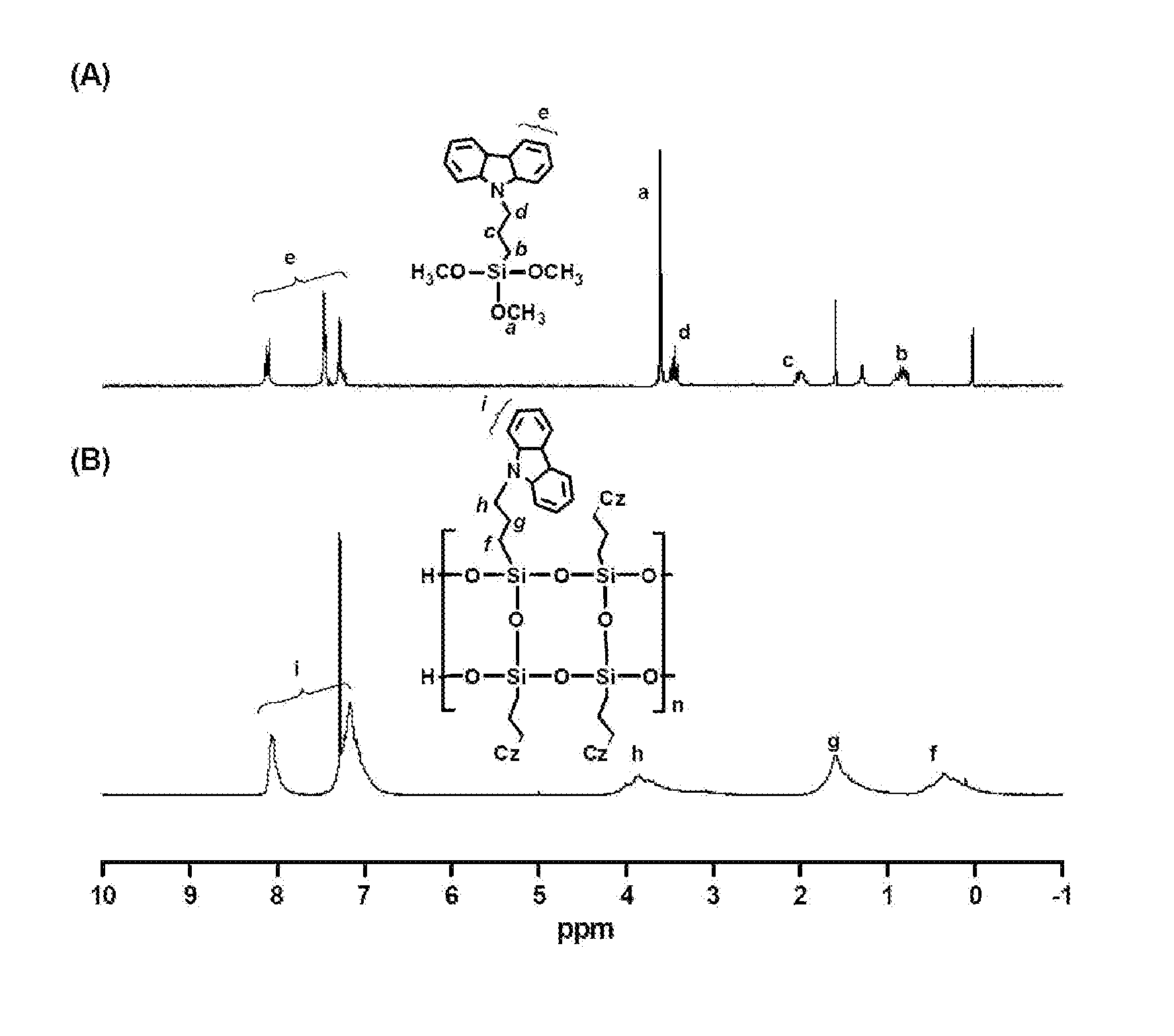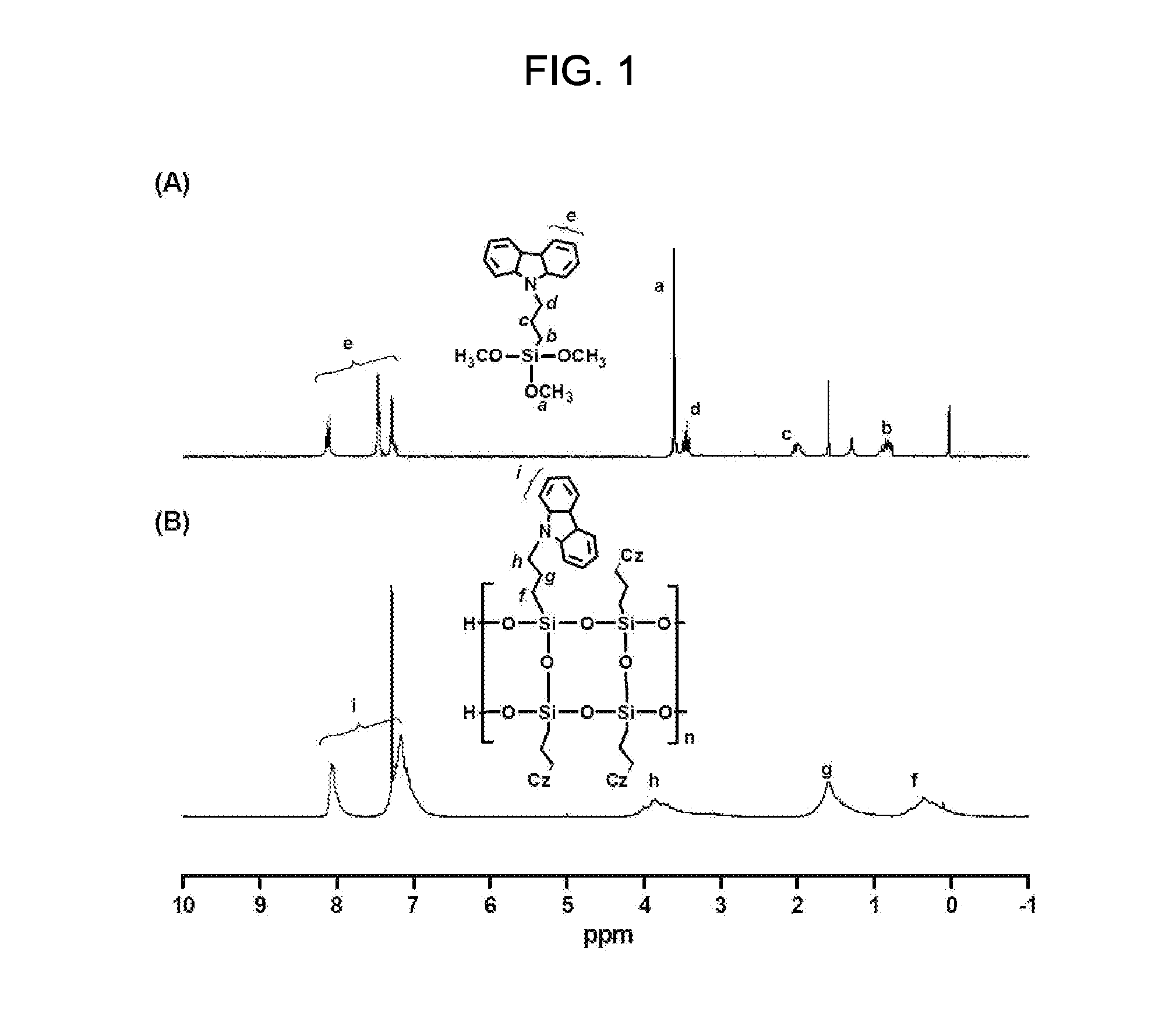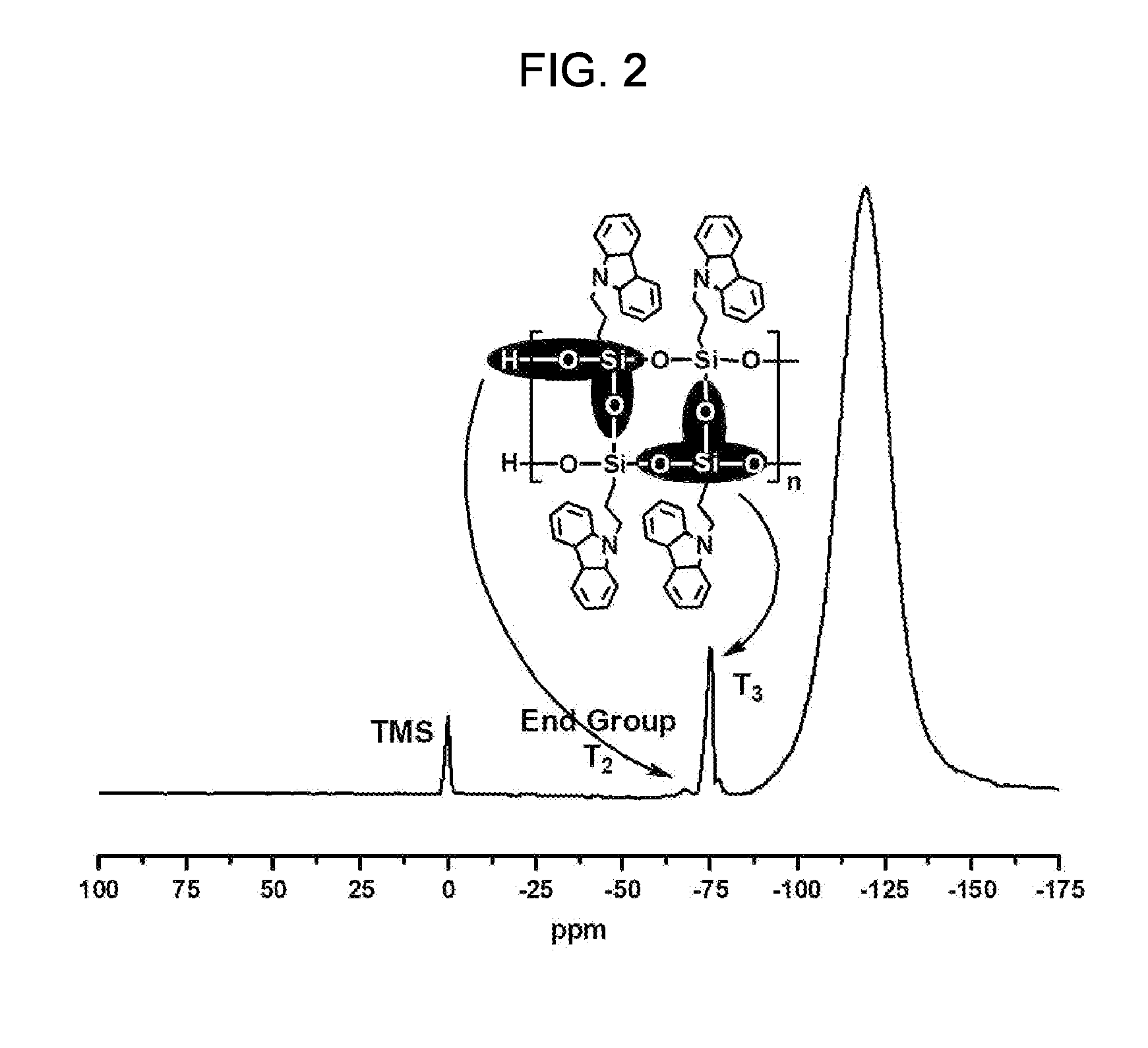Light-emitting material comprising photoactive group-bonded polysilsesquioxane having a ladder structure, thin film using the same and organic electronic device comprising the same
a technology of photoactive group and light-emitting material, which is applied in the direction of synthetic resin layered products, instruments, transportation and packaging, etc., can solve the problems of practical material, relatively low glass transition temperature and melting point, and the tendency of functional groups to aggregate, so as to improve the cotability and film property, improve the luminous efficiency, and improve the effect of heat resistance and mechanical properties
- Summary
- Abstract
- Description
- Claims
- Application Information
AI Technical Summary
Benefits of technology
Problems solved by technology
Method used
Image
Examples
example 1
[0050]First, 3-bromopropyltrimethoxysilane (BPTMS) and carbazole were reacted in dimethylformamide (DMF) at 130° C. for 48 hours in the presence of K2CO3 to synthesize a 9-[3-(trimethoxysilyl)propyl]-9H-carbazole monomer. The monomer and K2CO3 were subjected to the next step without purification, except for removing the solvent and excess BPTMS using a vacuum evaporator. The monomer was dissolved again in DMF and then hydrolyzed at room temperature by adding 10 times the volume of water by single drip irrigation. As the monomer was hydrolyzed, the hydrolyzed monomer was simultaneously polymerized by condensation. One hour later, poly(propylcarbazole silsesquioxane) (PPCSQ) was obtained as yellow precipitate in solution.
experimental example 1
[0051]Weight average molecular weight and molecular weight distribution of the PPCSQ prepared in Example 1 were measured using a JASCO PU-2080 Plus SEC system equipped with an RI-2031 Plus refractive index detector and a UV-2075 Plus UV detector (detection wavelength: 254 nm). Measurement was made in THF at 40° C. at a flow rate of 1 mL / min. Sample was separated using four columns (Shodex GPC KF-802, KF-803, KF-804 and KF-805). SEC analysis revealed that the PPCSQ had a weight average molecular weight of 10,200 and a molecular weight distribution of 2.16.
experimental example 2
[0052]1H and 29Si spectra of the PPCSQ prepared in Example 1 were recorded in CDCl3 at 25° C. using Varian Unity Inova (1H: 300 MHz, 29Si: 99.5 MHz). FIG. 1 and FIG. 2 respectively show the 1H spectrum and the 29Si spectrum.
[0053]In FIG. 1, (A) and (B) respectively show 1H spectra of the 9-[3-(trimethoxysilyl)propyl]-9H-carbazole monomer and the PPCSQ. The disappearance of the trimethoxy peak a and the broadened peaks f through i in (B) show that the completely hydrolyzed monomer was successfully condensation polymerized to yield the PPCSQ.
[0054]FIG. 2 shows the 29Si NMR spectrum of the PPCSQ. The broad and large absorption peak at −70.6 to −79.2 ppm and the small downfield absorption peak respectively represent the T3 structure of the siloxane bond [R—Si(OSi—)3] and the T2 structure of the siloxane bond [R—Si(OSi—)2(OR′)]. With the increase of the T3 structure, the defect of the siloxane bonding decreases. T3:T2 was calculated as 98% from the integration of the peaks. This result r...
PUM
| Property | Measurement | Unit |
|---|---|---|
| Thickness | aaaaa | aaaaa |
| Surface roughness | aaaaa | aaaaa |
| Light | aaaaa | aaaaa |
Abstract
Description
Claims
Application Information
 Login to View More
Login to View More - R&D
- Intellectual Property
- Life Sciences
- Materials
- Tech Scout
- Unparalleled Data Quality
- Higher Quality Content
- 60% Fewer Hallucinations
Browse by: Latest US Patents, China's latest patents, Technical Efficacy Thesaurus, Application Domain, Technology Topic, Popular Technical Reports.
© 2025 PatSnap. All rights reserved.Legal|Privacy policy|Modern Slavery Act Transparency Statement|Sitemap|About US| Contact US: help@patsnap.com



